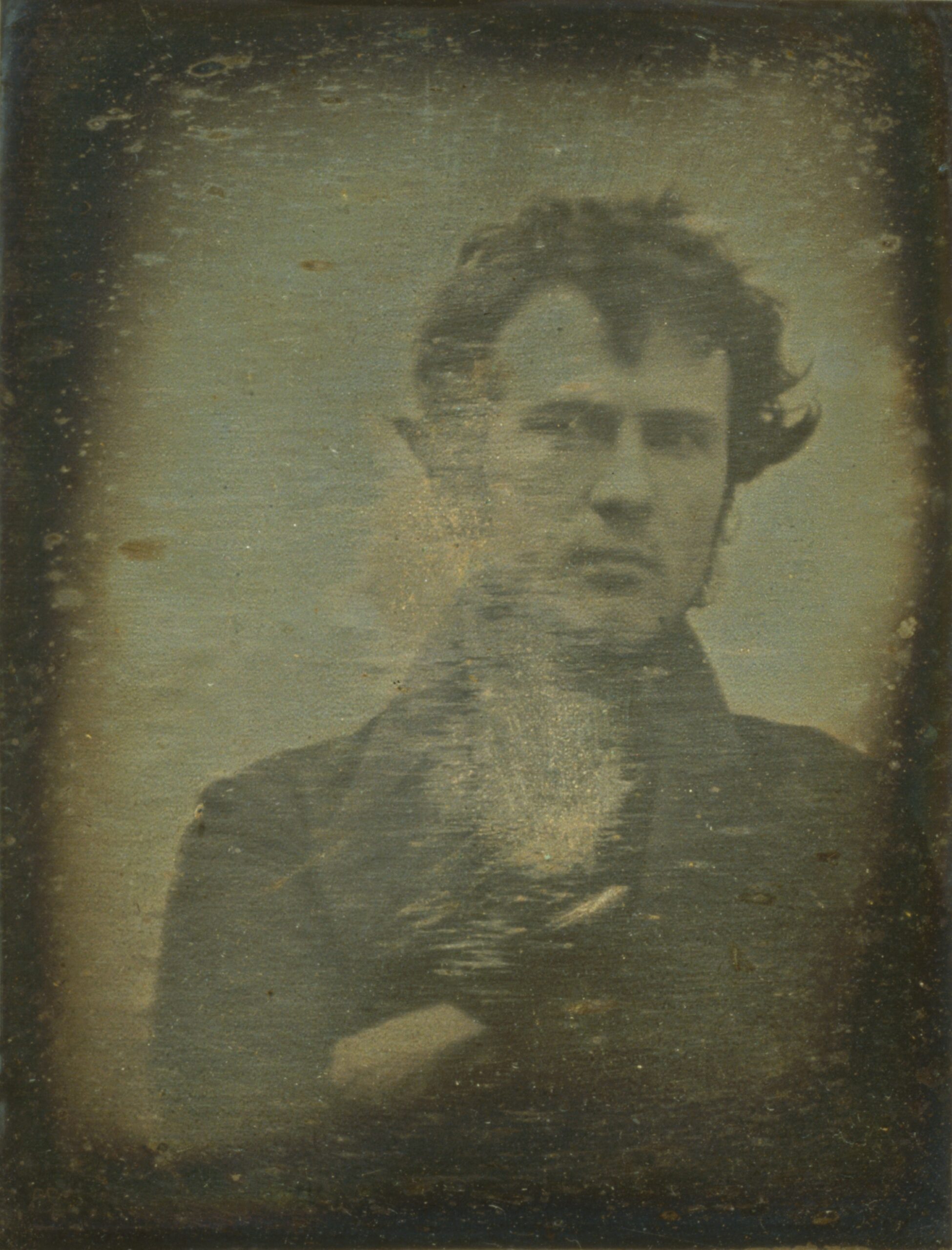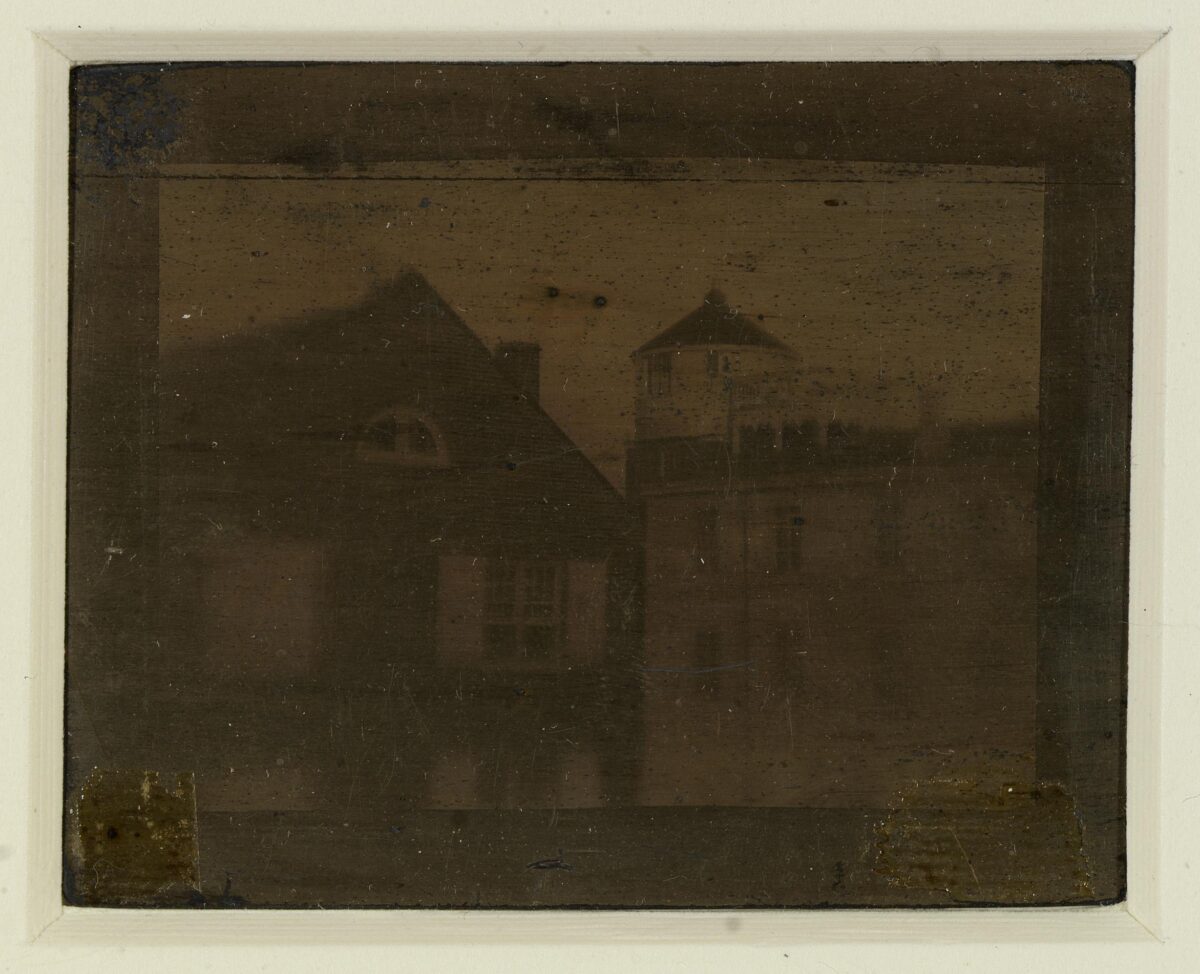As of this writing, about 700 billion photographs have been uploaded to the internet. Billions and billions more exist in physical form. Many of these photos fall into the category now referred to as “selfies,” a type of photograph that is typically assumed to be as young as Generation Y. However, the roots of the selfie actually go back almost 200 years.
The son of a Dutch immigrant, Robert Cornelius was born in Philadelphia in 1809. As a child, Cornelius was fascinated by chemistry. This interest was surely fanned by the boy’s father, a silversmith, who taught Robert the business of metal polishing and silver plating.
In 1839, the world was taken by storm when French artist Louis Daguerre invented the daguerreotype, a complex process—involving silver-plated copper, mercury vapor, and liquid chemical treatment—that could produce a photographic likeness. An account of Daguerre’s process was published in Philadelphia on October 15, 1839. The next day, Cornelius was approached by a local watchmaker and inventor named Joseph Saxton, who was at that time, an employee of the Philadelphia Mint. Saxton wanted Cornelius to help him produce a daguerreotype image. Cornelius agreed.
Cornelius created the silver plating for Saxton’s photographic image; and that image, as far as we know, was the first photograph ever taken in the United States. In dark hues of gold and brown, the image was taken from Saxton’s own Philadelphia Mint office window, and it portrays part of the State Arsenal and a section of a neighboring high school. A late-19th century description of the “camera” reveals Saxton’s quick ingenuity: A seidlitz powder (a laxative) box with a few flakes of iodine answered for a coating box, while a cigar box and burning glass were improvised for a camera. One Philadelphia photographer later wrote that the Saxton daguerreotype “created no small excitement among the curious in such matters; and from this date, many of our Philadelphia savants began cultivating the art.”
The experience ignited in Cornelius an abiding interest in photography, and he was determined to improve upon the makeshift daguerreotype he’d helped Saxton throw together. In this effort, he enlisted a physician named Paul Beck Goddard, and later that same month of October, they produced a daguerreotype image of Cornelius himself—the first photographic portrait (picture of a human being) ever taken in the United States. It was probably the first ever in history, although one earlier daguerreotype image had been taken a year before in Paris and happened to include a couple people in the background. But that image wasn’t meant as a portrait.
From the metallic, spotted image, Cornelius, with his head slightly tilted to the left, stares back at us with determined eyes set underneath a prominent forehead, that was partly covered by his thick, disheveled hair. He wears a dark coat with a cravat. His right arm is held upright across his chest, and his right hand is tucked beneath the left side of his coat. The limitations of the technology dictated that for this first-ever selfie, Cornelius had to sit still for up to 15 minutes.

Cornelius went on to establish several photo studios, manufacturing his own cameras, plates, and mats to produce portraits for the prominent people (among others) of his time. Many of those photographs survive to this day.
One of his innovations was in harnessing additional light via the use of reflectors. Writing several decades later, one observer of Cornelius described his process: For coating the plates, he used dry iodine exclusively; and by several large reflectors, set at different angles, both within doors and without, he was enabled, in strong sunshine, to concentrate upon his sitter light enough to obtain through a side-window facing south, an impression within from one to five minutes.
Cornelius was later able to improve his process to the point where he could produce “fair impressions, even without reflectors, in from 10 to 60 seconds—and this too within doors.” But success invited imitation, and, as one mid-19th century historian informs us: “Together with the improvements made by [Cornelius] and others in the heliographic apparatus [light reflectors] and manipulative methods, and the great advance consequent thereon in the mode of obtaining portraits from life, quite a number of persons directed their attention to the art from the hope of making it a source of profit.”
As the demand for and interest in photography spread, and as more studios opened, Cornelius opted to move on to other things: specifically, the invention of a solar lamp that proved highly popular across the United States and Europe—but that’s another story. Incidentally, few people knew or understood at the time that Cornelius had taken the first photographic portrait in American history. He wasn’t one to trumpet his own accomplishments.
Luckily for us, however, Cornelius mentored others at his studio. One of them was a young man named Marcus Root. A quarter-century after that first selfie was taken, in 1864, Root published “The Camera and the Pencil, or the Heliographic Art,” which included, along with the theory and practice of photography, a history of the field. That book explicitly, and rightly, credited Cornelius with the first photographic portrait.
Twelve years later, “The Camera and the Pencil” was exhibited at the Centennial Exhibition, where the book was noticed by a photographer named Julius Sachse. Sachse went on to interview Cornelius, and later became editor of the “American Journal of Photography.” In this way, Cornelius’ legacy was secure—and just in the nick of time. He died the following year, in1877.
So, the next time you take a selfie, take a moment to remember Cornelius—and be glad you don’t have to sit still for 15 minutes.




